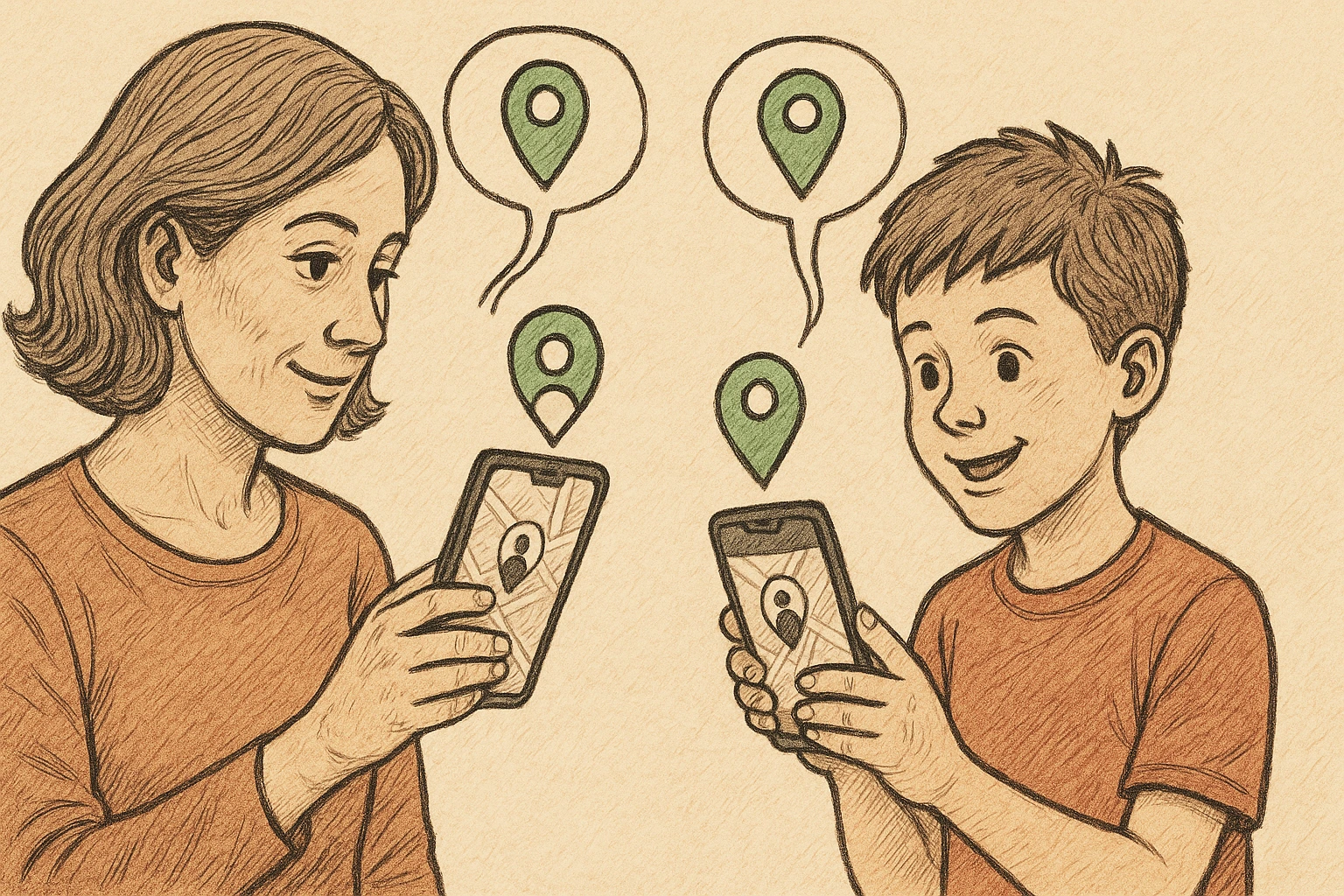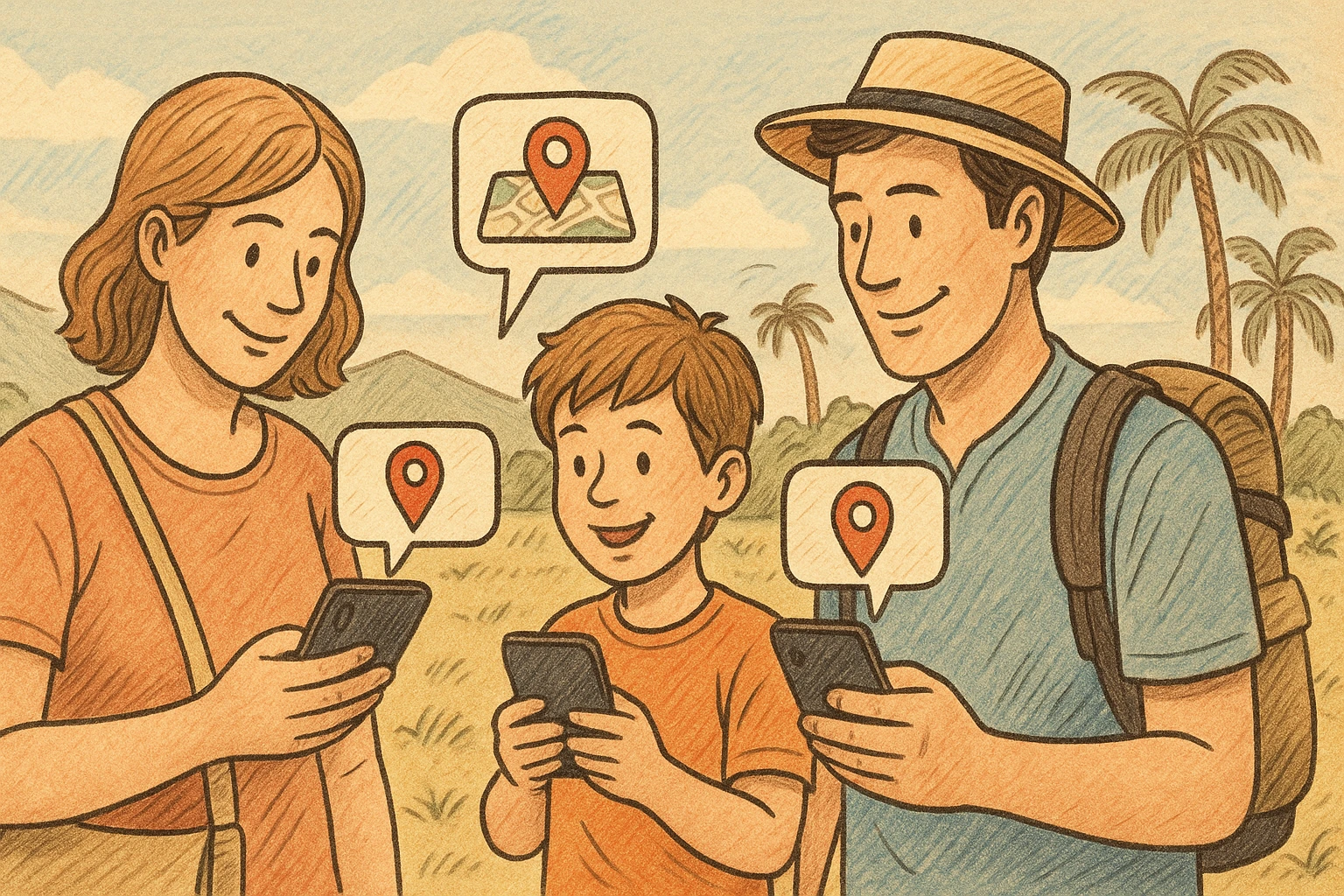
Guide on Tracking Location History: for Parents, Travelers, and More
In today’s connected world, tracking location history is no longer a novelty—it’s a daily utility. Parenting, travelling, or simply better understanding of your routine, various methods from simple Google Maps location history to advanced apps are your helpers. Let’s explore the best methods, tools, and precautions you should consider to track and manage location history effectively and responsibly.

Why Track Location History?
✅ Safety and Security
For parents, location history can serve as a critical safeguard. By keeping track of a child’s movements, parents gain real-time peace of mind. Alerts can be set up to notify you when your child arrives at or leaves specific locations like school, extracurricular activities, or home. This passive oversight fosters both independence and protection without constant communication.
✅ Travel Memories and Itinerary Recall
Travelers benefit from location tracking in a different way. Imagine you’ve just completed a two-week trip across Europe—thanks to location history, you can revisit every café in Paris or hiking trail in the Swiss Alps. It enables you to recall the name of that hidden trattoria in Rome or trace your journey for a blog, travel journal, or social media post.
✅ Device Recovery and Anti-Theft
A lost phone isn’t just a minor inconvenience—it’s a potential data breach and communication breakdown. Location history services help you retrace the last known steps of your device, increasing the chances of a successful recovery. In case of theft, authorities can be provided with crucial leads.
✅ Personal Optimization and Habits
Analyzing your own movement patterns might seem trivial, but it can lead to insights about your routine, commute efficiency, or weekend activities. Are you spending too much time in traffic? Is your daily route to work optimal? Location history offers answers rooted in real behavior, not assumptions.
Popular Ways to Track Location History
Let’s start with the most accessible tools—those built into your smartphone.
1. Built-in Smartphone Features
Modern smartphones come pre-equipped with robust location-tracking services, and when configured properly, they can provide a detailed log of your daily life. Here’s how the main platforms handle it:
📍 Google Maps Timeline (Android & iOS)
Google Maps Timeline is one of the most user-friendly and comprehensive tracking tools available. Once you enable Location History in your Google account, the service automatically logs your routes, visited places, and trips—all beautifully organized in a personal, calendar-like interface.
What you get:
- Daily and monthly summaries of places visited
- Route replay and travel modes (walking, driving, biking)
- Tagging of frequently visited spots
- Integration with Google Photos for location-based image tagging
Ideal For:
Travelers, commuters, urban explorers, and anyone who wants an effortless digital memory of where they’ve been.
📍 Apple’s Significant Locations (iOS Only)
Apple’s alternative is more privacy-focused. Found under Settings > Privacy & Security > Location Services > System Services > Significant Locations, this feature logs frequently visited locations to improve services like Maps, Calendar, and Photos. However, this data remains encrypted and is stored only on the device.
What you get:
- A list of your frequent places
- Dates and times of visits
- No cloud storage—local encryption ensures data safety
Ideal For:
iPhone users who want subtle, secure tracking that enhances device intelligence without broadcasting data to the cloud.
✅ Benefits of Built-in Features
- Ease of Use: No need for extra installations.
- Seamless Integration: Location data improves map accuracy, travel time predictions, and app personalization.
- Automatic Logging: You don’t need to remember to check in—your phone does the work silently.
⚠️ Considerations
- Privacy Risks: Google’s cloud-based storage means data could be accessed if your account is compromised.
- Battery Impact: Constant location tracking can drain battery life.
- Permissions: Both Android and iOS require explicit permission to enable location tracking—failure to grant these means data won’t be recorded.
2. Dedicated Family and Parental Tracking Apps
Family tracking apps are tailor-made for parents, guardians, and caregivers. They provide detailed insights into a family member’s whereabouts, not just as a dot on the map, but through contextual features like trip summaries, driving behavior, and geofenced alerts.
🧭 Popular Family Location Tracking Apps
| App Name | Platform | Key Features |
| Findmykids | iOS, Android | Real-time location, SOS button, geofencing, sound around alerts |
| Life360 | iOS, Android | Driving reports, crash detection, location history |
| FamiSafe | iOS, Android | Screen time, app usage, suspicious photo detection |
| Screen Time | iOS, Android | Location history, geofencing, offline last known position |
Each app caters to slightly different needs, from real-time GPS tracking to detailed movement reports and emergency alerts.
✅ Benefits of Family Tracking Apps
- Real-Time Tracking: Always know where your children or elderly family members are.
- Geofencing: Set up virtual boundaries (e.g., school zone, playground). Receive instant notifications when someone enters or exits the zone.
- Customizable Alerts: Be notified about arrivals, departures, or if a device loses connection.
- Offline Tracking: Many apps can still provide the last known location even if the device goes offline or powers down.
⚠️ Considerations for Parental Control
- Transparency Is Key: Always talk to children about why tracking is enabled. This builds trust and helps avoid unnecessary friction.
- Privacy Settings: Ensure only authorized guardians can access data. Most apps offer multiple user roles or admin access.
- Subscription Fees: While free tiers exist, full functionality often requires monthly or annual subscriptions. Make sure to evaluate pricing against needs.
3. Tracking by Phone Number: Number Tracker App
Not every situation calls for a complex app installation or account setup. That’s where the Number Tracker app excels. It allows users to track a device’s real-time location and historical routes using just the phone number—no prior access to the device is required.

🔍 Key Features of the Number Tracker App
- Phone Number-Based Location: Simply enter the number and receive accurate, live location data.
- Location History Logs: Access past movements to understand patterns, destinations, and time stamps.
- Minimal Setup: No need to install software on the target device or request pairing permissions.
This tool is ideal for:
- Parents needing an emergency backup tracker
- Employers verifying on-field employee routes
- Anyone wanting an immediate way to find a lost device or check location without prior configuration
✅ Benefits of Number Tracker
- Fast Access: Bypass long setup times—just input the phone number.
- No Pre-Installed App Needed: Makes it suitable for shared phones or temporary check-ins.
- Versatility: Works as a standalone tool or alongside family tracking apps for a more complete monitoring solution.
Privacy and Security Considerations
🔒 Data Storage Risks
Many tracking services store location history in the cloud. While this enables cross-device syncing and easy access, it also introduces vulnerabilities:
- Account breaches can expose sensitive location data.
- Unencrypted logs may be accessible to third-party apps or bad actors.
Solution: Enable two-factor authentication (2FA) and use strong, unique passwords for accounts tied to tracking apps.
🔍 App Permissions
Too many apps requesting location access can create blind spots in your privacy. Many users unknowingly grant continuous access during app setup.
Solution: Regularly review app permissions on both Android and iOS:
- Go to Settings > Privacy > Location Services on iPhone.
- Navigate to Settings > Location > App Permissions on Android.
🧠 Informed Consent
If you’re using tracking tools for someone else—such as your child, partner, or employee—communication is non-negotiable. Covert tracking can break trust and, in many regions, violate legal boundaries.
Solution: Have open conversations about the purpose, scope, and duration of tracking. Set expectations, especially with teens or adults under your care.
🛠️ Managing Your Own Location History
Most major services allow full control over what’s stored and for how long.
| Service | Control Options |
| Google Maps Timeline | Pause, delete entries, auto-delete after 3/18 mo |
| Apple Significant Locations | View/edit/delete, stored only on device |
| Life360 / Findmykids | Location sharing toggles, adjustable alerts |
Pro Tip: If privacy is a top concern, periodically audit your location history and clear unused or old data logs.
Comparison Table: Popular Location Tracking Methods
| Method | Best For | Key Features | Privacy Controls |
| Google Maps Timeline | Travelers, Daily Users | Personal map, trip history, timeline views | Full user control; auto-delete |
| Apple Significant Locations | Privacy-conscious iOS users | On-device logs, frequent locations | Device-only encryption |
| Family Tracking Apps | Parents, Caregivers | Geo-fencing, real-time alerts, offline support | Admin roles, notification logs |
| Number Tracker App | Quick one-time tracking | Track by phone number, no installation needed | User consent required |
Each solution serves a different use case. The key is understanding your intent: is it safety, memory, recovery, or monitoring? Based on that, you can select a method that respects both your needs and the privacy of others.
Final Recommendations
As location tracking becomes more widespread, the challenge isn’t accessing tools—it’s using them wisely. Here are the core takeaways:
- Parents should use apps like Findmykids or Life360 with open communication and proper boundaries.
- Travelers can rely on Google Maps Timeline or Apple’s features for trip logging and journaling.
- Device owners can benefit from tools like the Number Tracker app for instant recovery or peace of mind in emergencies.
- Everyone should regularly audit their app permissions and manage location history for maximum control.
✅ Actionable Tip: Combine built-in features with an external app for a multi-layered approach. For example, use Google Maps for memory and Number Tracker for emergencies.
Tracking location history isn’t just about knowing where someone is—it’s about using that knowledge safely, responsibly, and efficiently. Whether you’re keeping your children safe, enhancing travel memories, or ensuring your device is never truly lost, today’s tools make it all possible—often with just a few taps.
But as with all technologies, thoughtful usage is key. Prioritize transparency, revisit permissions regularly, and choose trusted apps like Number Tracker to keep your data secure and your experiences worry-free.
Recent Posts
- Guide on Tracking Location History: for Parents, Travelers, and More
- Is Your 1981 Susan B. Anthony Dollar Worth More Than You Think?
- Spring Accessories to Make Your Looks More Stylish and Unique
- Understanding the role of nutrition in enhancing athletic performance across different sports
- Examining the ethics surrounding influencer marketing in today’s digital age





